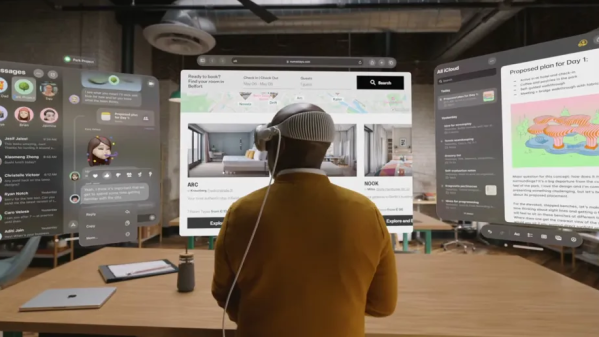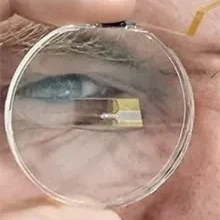Augmented reality (AR) tech is getting more and more powerful, the glasses themselves are getting sleeker and prettier, and at some point, hackers have to conquer this frontier and extract as much as possible. [Void Computing] is writing an open source SDK for making use of AR glasses, and, along the way, they’ve brought us two wonderful blog posts filled with technical information laid out in a fun to read way. The first article is titled “AR glasses USB protocols: the Good, the Bad and the Ugly”, and the second one follows as “the Worse, the Better and the Prettier”.
 Have you ever wanted to learn how AR glasses and similar devices work, what’s their internal structure, which ones are designed well and which ones maybe not so much? These two posts have concise explanations, more than plenty of diagrams, six case studies of different pairs of AR glasses on the market, each pair demonstrated by our hacker’s canine assistant.
Have you ever wanted to learn how AR glasses and similar devices work, what’s their internal structure, which ones are designed well and which ones maybe not so much? These two posts have concise explanations, more than plenty of diagrams, six case studies of different pairs of AR glasses on the market, each pair demonstrated by our hacker’s canine assistant.
[Void Computing] goes in-depth on this tech — you will witness MCU firmware reverse-engineering, HID packet captures, a quick refresher on the USB-C DisplayPort altmode, hexdumps aplenty, and a reminder on often forgotten tools of the trade like Cunningham’s law.
If reverse-engineering lights your fire, these high-level retrospectives will teach you viable ways to reverse-engineer devices in your own life, and they certainly set a high bar for posts as far as write-ups go. Having read through these posts, one can’t help but think that some sort of AR glasses protocol standard is called for here, but fortunately, it appears like [Void Computing]’s SDK is the next best thing, and their mission to seize the good aspects of a tentative cyberpunk future is looking to be a success. We’ve started talking about AR glasses over a decade ago, and it’s reassuring to see hackers catching up on this technology’s advancements.
We thank [adistuder] for sharing this with us on the Hackaday Discord server!




![[miko_tarik] wearing diy AR goggles in futuristic setting](https://hackaday.com/wp-content/uploads/2024/11/diy-ar-goggles-1200.jpg?w=600&h=450)
![[miko_tarik] wearing diy AR goggles](https://hackaday.com/wp-content/uploads/2024/11/diy-ar-goggles-smallphoto.jpg?w=400) Creating Zero wasn’t simple. From designing the frame in Tinkercad to experimenting with transparent PETG to print lenses (ultimately switching to resin-cast lenses), [mi_kotalik] faced plenty of challenges. By customizing SPI displays and optimizing them to 60 FPS, he achieved an impressive level of real-time responsiveness, allowing him to explore AR interactions like never before. While the Raspberry Pi Zero’s power is limited, [mi_kotalik] is already planning a V2 with a Compute Module 4 to enable 3D rendering, GPS, and spatial tracking.
Creating Zero wasn’t simple. From designing the frame in Tinkercad to experimenting with transparent PETG to print lenses (ultimately switching to resin-cast lenses), [mi_kotalik] faced plenty of challenges. By customizing SPI displays and optimizing them to 60 FPS, he achieved an impressive level of real-time responsiveness, allowing him to explore AR interactions like never before. While the Raspberry Pi Zero’s power is limited, [mi_kotalik] is already planning a V2 with a Compute Module 4 to enable 3D rendering, GPS, and spatial tracking.



 Have you ever wanted to learn how AR glasses and similar devices work, what’s their internal structure, which ones are designed well and which ones maybe not so much? These two posts have concise explanations, more than plenty of diagrams, six case studies of different pairs of AR glasses on the market, each pair demonstrated by our hacker’s canine assistant.
Have you ever wanted to learn how AR glasses and similar devices work, what’s their internal structure, which ones are designed well and which ones maybe not so much? These two posts have concise explanations, more than plenty of diagrams, six case studies of different pairs of AR glasses on the market, each pair demonstrated by our hacker’s canine assistant.









